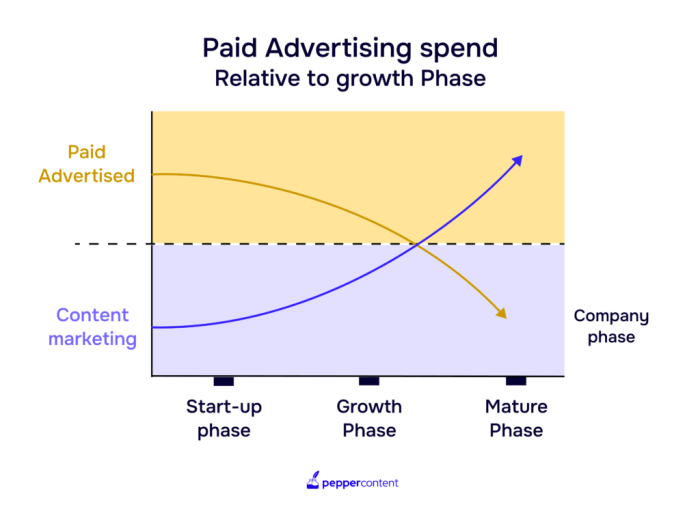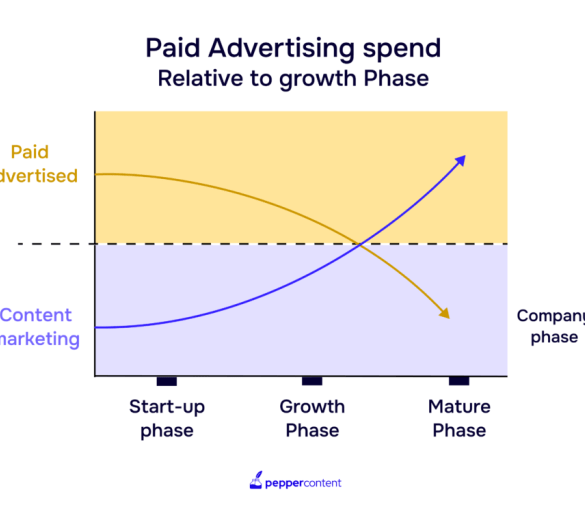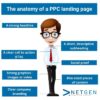What is the evidence content marketing increases sales? This exploration dives deep into the data, revealing the compelling connection between high-quality content and revenue growth. We’ll uncover the strategies, tactics, and measurable results that demonstrate how content marketing isn’t just a buzzword, but a powerful engine for boosting sales.
From defining content marketing and exploring various formats like blog posts and videos, to measuring their impact on sales, we’ll delve into real-world case studies and analyze successful strategies across different industries. We’ll examine the crucial alignment of content strategy with sales goals, effective distribution channels, and crucial customer engagement analysis. This comprehensive guide equips you with the knowledge and actionable insights to transform your content into a sales-driving force.
Defining Content Marketing
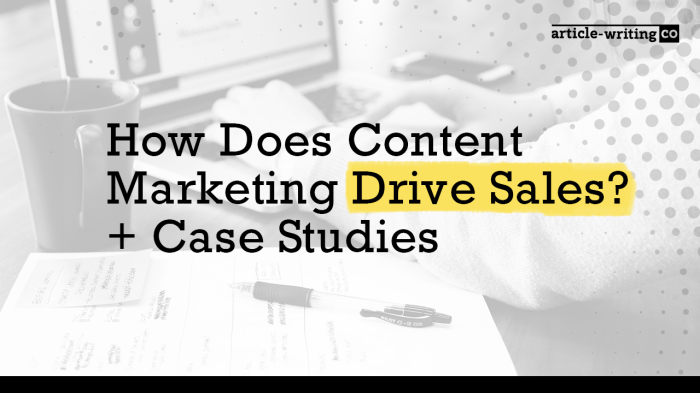
Content marketing is a strategic marketing approach focused on creating and distributing valuable, relevant, and consistent content to attract and retain a clearly defined audience — and, ultimately, to drive profitable customer action. It’s not about directly selling a product or service; instead, it’s about building relationships and establishing thought leadership within a specific industry. It’s a long-term strategy that fosters trust and loyalty, leading to increased brand awareness and ultimately, driving sales.This approach differentiates itself from traditional advertising by providing value to the consumer first.
Rather than interrupting their experience with intrusive ads, content marketing aims to engage them with informative and entertaining content that addresses their needs and interests. This builds a stronger connection with the target audience, leading to more genuine interest and conversions.
Key Characteristics of Content Marketing
Content marketing is distinct from other marketing strategies due to several key characteristics. It’s not just about producing any content; it’s about aligning the content with the audience’s needs and interests. The core goal is to educate, entertain, or inspire, ultimately driving profitable customer action. This contrasts with advertising, which often focuses on immediate sales. Content marketing is also less about direct promotion and more about providing value.
Different Forms of Content Marketing
Content marketing encompasses a variety of formats. Blog posts remain a cornerstone, offering a platform for in-depth articles, industry insights, and engaging storytelling. Videos provide dynamic ways to communicate information, often with higher audience engagement rates compared to static text. Infographics visually represent data and complex information, making it easier for audiences to understand and retain key takeaways.
Social media posts, while often brief, allow for immediate engagement and interaction, driving brand visibility and creating a sense of community. Case studies, white papers, and ebooks are longer-form content that showcases expertise and provides detailed information about specific solutions. Each format serves a unique purpose and contributes to the overall content marketing strategy.
Comparing Content Marketing Strategies
| Feature | Content Marketing | Social Media Marketing | Email Marketing |
|---|---|---|---|
| Goal | Attract and engage audience, build brand awareness, establish thought leadership | Build brand awareness, drive traffic, engage with audience | Nurture leads, build relationships, drive conversions |
| Content Focus | High-quality, valuable content tailored to audience needs | Engaging, shareable content optimized for social media platforms | Targeted, personalized messages aligned with audience interests |
| Timeframe | Long-term, focused on building relationships | Short-term, focused on immediate engagement | Ongoing, focused on nurturing relationships |
| Measurement | Track website traffic, lead generation, conversions | Track social media engagement, reach, and audience growth | Track open rates, click-through rates, conversion rates |
This table highlights the differences in focus and goals between content marketing and other common marketing strategies.
Successful Content Marketing Campaigns
| Industry | Company | Campaign Example |
|---|---|---|
| Software | HubSpot | Providing free resources (blog posts, ebooks, webinars) on inbound marketing and sales. |
| Fashion | ASOS | Creating engaging content that shows fashion trends, and style tips, directly appealing to their customer base. |
| Food | Blue Apron | Offering recipes, cooking tips, and lifestyle content about healthy eating to promote the brand’s subscription box service. |
These examples showcase the versatility and effectiveness of content marketing across diverse industries. Each company tailored its content to resonate with its target audience, driving engagement and ultimately, increased sales.
Measuring Sales Impact
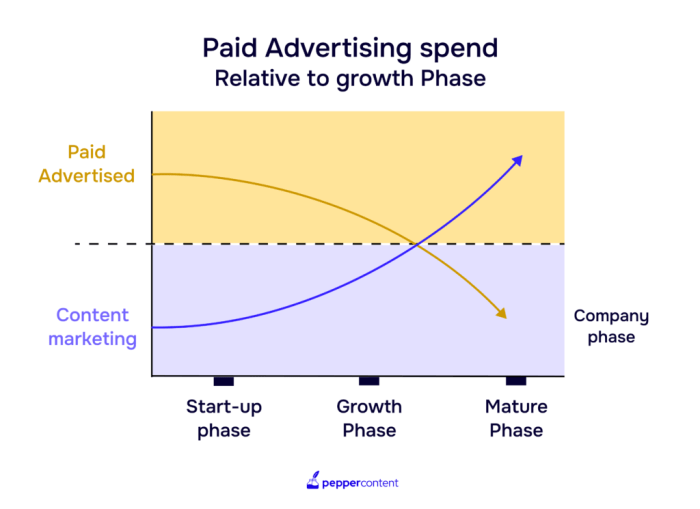
Content marketing’s success hinges on demonstrably boosting sales. Simply creating engaging content isn’t enough; you need a system for measuring its impact on revenue. This involves tracking not just website traffic, but also the crucial connection between content consumption and actual purchases. Understanding these metrics empowers you to optimize your content strategy for maximum return on investment.Different metrics can provide a comprehensive view of the relationship between content marketing and sales.
Plenty of studies show content marketing boosting sales. It’s about creating valuable, engaging content that attracts customers and builds trust. This is crucial for a growth strategy, especially for undifferentiated firms, like those discussed in building a growth strategy for the undifferentiated firm. By showcasing expertise and providing solutions, businesses can stand out and drive sales.
So, the evidence for content marketing’s effectiveness in increasing sales is pretty strong.
Tracking these metrics allows you to understand which content resonates most with your audience and drives the most valuable actions.
Key Metrics for Sales Impact
A robust approach to measuring sales impact involves a multifaceted strategy. Tracking website traffic and engagement metrics provides insights into content performance, but correlating these metrics with revenue generation is crucial. This involves using analytics tools to monitor and analyze user behavior on your website. Tracking specific user actions, such as time spent on a page, bounce rates, and click-through rates, provides valuable insights into how well your content resonates with your audience.
- Website Traffic: This encompasses the number of visitors to your website. Tools like Google Analytics provide detailed data on the sources of this traffic (e.g., organic search, social media, referrals). Analyzing this traffic data helps understand which content attracts the most visitors.
- Engagement Metrics: Engagement metrics encompass actions taken by visitors, such as time spent on pages, downloads, and social shares. Higher engagement indicates greater interest and potentially higher conversion rates. Monitoring these metrics reveals the level of audience interaction with your content.
- Lead Generation: Tracking the number of leads generated through content marketing efforts is crucial. This can be measured through forms, email sign-ups, and other lead capture mechanisms. A higher number of leads signifies increased potential customers interested in your offerings.
- Conversion Rates: Conversion rates represent the percentage of visitors who complete a desired action, such as making a purchase or requesting a quote. High conversion rates indicate that your content effectively persuades visitors to take the desired action.
Connecting Content Performance to Revenue
Establishing a direct link between content performance and revenue generation is vital. Tools like Google Analytics, combined with CRM (Customer Relationship Management) systems, enable you to analyze which content pieces correlate with specific sales. This correlation helps understand which content leads to higher conversions and ultimately, revenue.
- Attribution Modeling: Employing attribution modeling, you can trace sales back to specific content pieces. This provides insights into which content contributes the most to revenue generation.
- Sales Data Integration: Integrate your sales data with your website analytics to identify correlations between content views and sales. This analysis can reveal patterns in customer behavior and preferences, enabling better content targeting.
- A/B Testing: Testing different versions of content to determine which performs better in driving conversions is vital. This iterative approach allows you to optimize your content for maximum impact.
Importance of Consistent Tracking
Maintaining consistent tracking methods is essential for accurate assessment of content marketing’s sales impact. Inconsistency in tracking metrics can lead to inaccurate conclusions and hinder optimization efforts. Regular review and adjustments to tracking methods are crucial to keep up with evolving strategies and technological advancements.
Return on Investment (ROI) Calculation
Calculating ROI for content marketing campaigns requires a structured approach. This table Artikels the process:
| Step | Action | Example |
|---|---|---|
| 1 | Define Costs | Content creation, design, promotion, tools |
| 2 | Measure Revenue | Sales generated directly from content |
| 3 | Calculate ROI | (Revenue – Costs) / Costs – 100% |
| 4 | Interpret Results | High ROI indicates effective campaign |
ROI = [(Revenue Generated – Costs) / Costs] – 100%
Case Studies and Examples
Content marketing isn’t just about creating engaging blog posts; it’s about strategically crafting content that drives tangible results. Successful case studies demonstrate how businesses leverage content to attract customers, build brand loyalty, and ultimately, boost sales. These examples provide valuable insights into the various strategies and tactics that can be implemented to achieve significant ROI.Effective content marketing strategies aren’t one-size-fits-all.
They require meticulous planning, understanding of the target audience, and consistent execution. Analyzing successful case studies allows us to identify key elements that contributed to their success and adapt those strategies to our own business needs.
Successful Content Marketing Campaigns
Numerous businesses have successfully employed content marketing to generate leads and drive sales. Analyzing these campaigns provides valuable insights into effective strategies and tactics. The following examples illustrate how different types of content can be used to achieve measurable results.
Example: HubSpot
HubSpot’s content marketing strategy is a prime example of how a focused approach can yield significant results. They create a wide array of valuable content, including blog posts, ebooks, webinars, and templates. This content addresses the specific needs and challenges of their target audience – businesses seeking to improve their marketing efforts. Their content is highly informative and educational, establishing them as a thought leader in the inbound marketing space.
This has led to a significant increase in lead generation and sales conversions. HubSpot’s success underscores the importance of providing value to the audience rather than just pushing sales messages.
Example: Moz
Moz, a popular and marketing tool provider, employs a multifaceted content marketing strategy. Their blog features in-depth articles on , link building, and other relevant topics. Moz also hosts webinars and conferences, providing valuable resources and insights to their audience. They also distribute case studies demonstrating the effectiveness of their tools and services, highlighting the tangible results clients have achieved.
This content not only attracts potential customers but also strengthens their position as an authority in the industry.
Example: Neil Patel
Neil Patel, a well-known digital marketing expert, uses a comprehensive content strategy across various platforms. He creates blog posts, YouTube videos, and social media content, consistently sharing valuable insights and strategies for online success. His content is often actionable, offering step-by-step guides and practical advice that resonate with his target audience of entrepreneurs and marketers. This consistent delivery of high-quality content has helped him build a massive following and attract numerous business partnerships and clients.
Measurable Results
Content marketing’s impact isn’t always immediately apparent. However, companies like those above have seen quantifiable results from their content efforts. These results often include:
- Increased website traffic
- Higher lead generation
- Improved brand awareness
- Stronger customer relationships
- Increased sales conversions
These measurable outcomes highlight the tangible value of investing in high-quality content marketing. Businesses can track key metrics to assess the effectiveness of their strategies and adapt their approach accordingly. This allows for continuous improvement and optimization of the content marketing process.
Plenty of evidence shows content marketing can boost sales. By creating valuable content, you attract more qualified leads, establish trust, and ultimately drive conversions. This is particularly powerful when integrated into a sales process, like with boosting sales using HubSpot, Google Sheets, and DocuSign integration here. Stronger sales processes, built on solid content strategies, are what truly drive up the bottom line, proving the direct correlation between content marketing and increased sales.
Key Takeaways from Case Studies
| Company | Content Type | Key Strategy | Measurable Results |
|---|---|---|---|
| HubSpot | Blog posts, ebooks, webinars | Value-driven, informative content | Significant lead generation, increased sales conversions |
| Moz | Blog posts, webinars, case studies | Authority building, practical advice | Attracted potential customers, strengthened industry position |
| Neil Patel | Blog posts, videos, social media | Actionable insights, consistent delivery | Massive following, numerous business partnerships |
These case studies demonstrate the diverse applications of content marketing and highlight the importance of tailoring content strategies to specific goals and target audiences.
Content Formats and Sales Connection: What Is The Evidence Content Marketing Increases Sales
Content marketing isn’t a one-size-fits-all approach. Different content formats resonate with various stages of the customer journey and serve distinct sales objectives. Understanding how to tailor content formats to specific needs and interests is crucial for maximizing conversion rates and driving revenue. This section delves into the effectiveness of different formats, their application within the sales funnel, and how they can be optimized for conversion.Choosing the right content format is paramount to achieving the desired impact on your target audience.
Each format offers a unique opportunity to engage prospects, build brand awareness, and ultimately, drive sales. Effective content marketing leverages a variety of formats to nurture leads and convert them into paying customers.
Comparing Content Formats for Sales Impact
Different content formats cater to distinct customer needs and preferences. Understanding the nuances of each format allows marketers to strategically align their content with the buyer journey and ultimately boost conversions.
- Blog posts are a cornerstone of content marketing, providing valuable information and establishing thought leadership. They are particularly effective for educating prospects about industry trends and problem-solving. A well-written blog post can attract organic traffic, nurture leads, and position your company as a reliable source of information.
- Videos provide a dynamic and engaging experience, especially for visually oriented audiences. Explainer videos, product demos, and testimonials can effectively showcase your brand’s value proposition. They can increase brand awareness and accelerate the conversion process.
- Podcasts allow for a more conversational and accessible approach to content consumption. They can be particularly effective in reaching audiences on the go or while performing other tasks. Podcasts are a great way to foster community and build a loyal customer base.
Tailoring Content Formats to Sales Funnels
A strong understanding of the sales funnel is crucial for effective content format selection. Each stage of the funnel demands a different approach to resonate with the audience’s needs and motivations.
- Awareness Stage: Blog posts, infographics, and social media updates are highly effective at generating awareness and attracting potential customers. This stage focuses on educating prospects about your products or services and highlighting their benefits.
- Consideration Stage: Case studies, white papers, and product demos are vital for demonstrating the value of your offerings. These formats provide detailed information to support the customer’s decision-making process.
- Decision Stage: Testimonials, reviews, and personalized product recommendations are key in persuading prospects to choose your solution. These formats highlight social proof and build trust, encouraging conversion.
Optimizing Content Formats for Conversions
Effective content formats are designed to guide users toward a specific action, such as making a purchase or requesting a demo. The call-to-action (CTA) plays a critical role in converting leads.
- Clear CTAs: Including clear and compelling CTAs within each piece of content is crucial. A strong CTA guides the user towards the desired action. For instance, a blog post might include a CTA to download a free ebook or schedule a consultation.
- Interactive Elements: Incorporating interactive elements like quizzes, polls, and surveys can enhance engagement and encourage user interaction. These elements help capture valuable data about the audience.
- A/B Testing: Testing different variations of content formats and CTAs can significantly improve conversion rates. This data-driven approach helps identify the most effective strategies.
Content Format Alignment with Target Audience Needs
Effective content formats cater to the specific needs and interests of the target audience. Understanding their preferences and pain points is crucial for creating content that resonates and drives engagement.
- Target Audience Research: Thorough research into the target audience’s interests, demographics, and online behavior is essential for developing content that resonates. Tools such as surveys, focus groups, and social listening can provide valuable insights.
- Content Persona Development: Creating detailed content personas allows marketers to understand the audience’s motivations and challenges, guiding the development of relevant and engaging content.
- Adapting to Preferences: Understanding different content preferences (e.g., visual learners vs. auditory learners) enables marketers to tailor content to resonate with their specific needs.
Content Format Summary for Sales Objectives
This table summarizes how different content formats can be used to achieve various sales objectives.
| Content Format | Sales Objective | Example |
|---|---|---|
| Blog Posts | Generating awareness, educating prospects | Industry insights, product tutorials |
| Videos | Demonstrating product value, building trust | Product demos, customer testimonials |
| Podcasts | Building community, establishing thought leadership | Interviews with industry experts, discussions on industry trends |
| Infographics | Simplifying complex information, capturing attention | Data visualizations, statistics on industry trends |
Content Strategy and Sales Alignment
Content marketing isn’t just about creating engaging content; it’s about strategically aligning that content with your overall sales goals. A well-defined content strategy acts as a roadmap, guiding your efforts to attract, engage, and ultimately convert prospects into customers. This alignment ensures that every piece of content contributes meaningfully to the sales process.A successful content strategy goes beyond simply publishing articles; it’s a carefully crafted plan that considers the entire customer journey.
This involves understanding where your target audience is at various stages and creating content tailored to their specific needs and pain points. By understanding this customer journey, you can create content that resonates deeply with them, building trust and ultimately driving sales.
Importance of Aligning Content Strategy with Sales Goals
Aligning content strategy with sales goals is crucial for several reasons. It ensures that every piece of content is working towards a common objective – driving sales. It helps optimize resource allocation, making sure that content creation efforts are focused on the topics and formats that are most likely to yield results. This also facilitates better measurement and tracking of content performance, as you can more readily tie content engagement to sales conversions.
Ultimately, this leads to a more efficient and effective marketing strategy.
Creating Content with a Customer Journey in Mind
Content should be created with a customer journey in mind. This means understanding the different stages of the buyer’s journey – awareness, consideration, decision, and action – and crafting content that resonates at each stage. For instance, during the awareness stage, you might create educational blog posts or share thought leadership articles. During the consideration stage, you’d provide in-depth comparisons and case studies.
In the decision stage, you might focus on testimonials, product demonstrations, or free trials. Finally, in the action stage, you can provide resources like order forms or FAQs.
Integrating Content Marketing into the Sales Funnel
Integrating content marketing into the sales funnel involves strategically placing content at each stage. Blog posts, ebooks, and webinars can nurture leads at the top of the funnel. Case studies and product demonstrations can support leads in the middle of the funnel. Finally, product pages and customer testimonials are essential for conversions at the bottom of the funnel.
Creating Content Addressing Customer Pain Points and Solutions
Understanding and addressing customer pain points is vital. Identify the common challenges and frustrations your target audience faces, and then create content that provides solutions. For example, if your product helps streamline a complex process, create a how-to guide or a video demonstrating the solution. If your target audience is struggling with a particular industry trend, create a blog post providing insights and solutions.
Structured Content Calendar Aligned with Sales Objectives
A structured content calendar is essential for aligning content with sales objectives. This calendar should map out the content pieces to be published, their target audience, the stage of the sales funnel they support, and the expected impact on sales.
| Date | Content Topic | Target Audience | Sales Funnel Stage | Expected Sales Impact |
|---|---|---|---|---|
| October 26, 2023 | How to Choose the Right CRM Software | Businesses looking for CRM solutions | Awareness/Consideration | Increased lead generation and qualified leads |
| November 2, 2023 | Case Study: Company X Improved Efficiency with Our CRM | Businesses considering CRM software | Decision | Conversion of qualified leads into paying customers |
| November 9, 2023 | CRM Software FAQs and Setup Guide | New CRM users | Action | Improved customer satisfaction and reduced customer support tickets |
Content Distribution and Sales Promotion
Content distribution isn’t just about getting your content out there; it’s about strategically placing it where your ideal customers are most likely to see it. Effective promotion goes hand-in-hand with distribution, transforming passive views into engaged prospects and ultimately, paying customers. A well-rounded content distribution strategy, combined with targeted promotion, significantly boosts the return on investment for your content marketing efforts.A crucial element of content marketing success is understanding where your target audience spends their time online.
Effective distribution ensures your content reaches the right people at the right moment, leading to a higher likelihood of engagement and conversion. This includes employing various promotion methods to generate leads and ultimately, drive sales.
Content Distribution Channels
Understanding the diverse channels available to reach your target audience is key. Different platforms cater to different demographics and interests. By strategically distributing content across multiple channels, you broaden your reach and increase the visibility of your message.
Plenty of evidence suggests content marketing boosts sales. It’s all about providing valuable information to your audience, building trust, and ultimately driving conversions. Understanding how Google AI Max works, for example, google ai max explained is crucial for optimizing your content strategy to align with search engine algorithms. This helps ensure your content reaches the right people, and in turn, directly impacts sales figures.
- Social Media Platforms: Platforms like LinkedIn, Twitter, Facebook, Instagram, and TikTok offer powerful avenues for reaching potential customers. Each platform has its unique audience characteristics, and tailoring content to each platform’s format and tone is crucial for optimal engagement.
- Email Marketing: Building an email list allows for direct communication with interested prospects. Targeted email campaigns can nurture leads, drive traffic to valuable content, and ultimately, convert them into paying customers. This approach enables direct engagement and relationship building.
- Search Engine Optimization (): Optimizing content for search engines ensures that your content ranks highly in search results. This organic visibility drives significant traffic and provides consistent exposure to potential customers.
- Paid Advertising: Paid advertising channels like Google Ads and social media ads allow for targeted campaigns reaching specific demographics and interests. This targeted approach ensures your content reaches the right people.
- Influencer Marketing: Partnering with influencers who align with your brand can significantly increase your reach and credibility. Influencers’ established audience trust translates into potentially higher conversion rates.
Content Promotion Strategies
Effective content promotion is not just about posting; it’s about actively engaging with your audience. This includes prompting interaction, responding to comments, and fostering a sense of community.
- Creating Compelling Calls to Action (CTAs): Clear and concise calls to action encourage desired actions like visiting a website, downloading a resource, or signing up for a newsletter. Using compelling CTAs within your content enhances the likelihood of conversion.
- Content Repurposing: Transforming existing content into different formats for various platforms is crucial. For instance, a blog post can be turned into a social media series or an infographic.
- Content Syndication: Sharing content on other platforms like industry blogs or publications extends its reach. This strategy helps to generate backlinks and expands your content’s visibility within the target audience’s online ecosystem.
- Community Engagement: Actively engaging with your audience through comments, responses, and participation in relevant discussions fosters a sense of community and trust. This approach establishes your brand as a reliable and engaging entity within the community.
Optimizing Content for Different Platforms
Tailoring your content for different platforms ensures maximum visibility and engagement.
- Understanding Platform-Specific Formats: Each platform has its own preferred content formats, from short-form videos on TikTok to in-depth articles on Medium. Understanding these differences is crucial to maximize the impact of your content.
- Utilizing Visual Elements: Visuals, such as images, videos, and infographics, enhance engagement and understanding. They improve readability and attractiveness, capturing attention more effectively than text-heavy content alone.
- Adapting Tone and Style: The tone and style of your content should align with the platform’s audience. For example, a formal tone might be suitable for LinkedIn, while a more casual approach might work better on Twitter.
Analyzing Customer Engagement and Sales
Understanding how customers interact with your content is crucial for optimizing your content marketing strategy and driving sales. This involves more than just publishing articles; it’s about fostering meaningful engagement and measuring the impact of your efforts on actual conversions. By analyzing customer behavior and feedback, you can refine your approach, tailor content to resonate better, and ultimately, achieve a higher return on investment.Customer engagement isn’t a one-time event; it’s an ongoing dialogue.
Tracking interactions, understanding motivations, and adapting to changing preferences are essential for long-term success. This analysis allows you to understand what resonates with your audience and what doesn’t, enabling informed decisions about content creation, distribution, and future strategies.
Importance of Analyzing Customer Engagement
Analyzing customer engagement with content reveals valuable insights into their needs, preferences, and pain points. This data is critical for refining content strategy, ensuring it effectively addresses audience requirements, and driving sales. It allows marketers to tailor content to resonate with specific segments, enhancing their impact and fostering a stronger connection with their target audience.
Key Indicators of Successful Content Engagement
Several key indicators reveal the effectiveness of content marketing efforts in fostering engagement and driving sales. These include website traffic, time spent on pages, social media shares, comments, and click-through rates. Analyzing these metrics provides a clear picture of how well content is performing and where improvements are needed.
How Customer Feedback Improves Content Strategies
Customer feedback, gathered through surveys, polls, comments, and social media interactions, provides valuable insights into what resonates and what doesn’t. This direct input allows for a dynamic content strategy, constantly adapting to changing needs and expectations. Understanding what customers want and what they’re struggling with empowers you to produce content that directly addresses their concerns.
Methods for Analyzing Data to Identify Patterns
Analyzing data to uncover patterns in content engagement and sales conversion requires employing various methods. Tools like Google Analytics, social media analytics platforms, and CRM systems provide comprehensive data sets. These systems enable the identification of trends, patterns, and correlations between content performance and sales. Furthermore, using data visualization tools to represent the data can highlight key insights more effectively.
Framework for Analyzing Customer Engagement Metrics, What is the evidence content marketing increases sales
| Metric | Description | Target/Desired Outcome | Actionable Insights |
|---|---|---|---|
| Website Traffic | Number of visitors to the website | Increasing traffic to relevant content | Identify popular content; assess content effectiveness |
| Time on Page | Average time spent on specific pages | Higher time spent indicates engagement | Identify high-interest topics; optimize content for deeper engagement |
| Social Media Shares | Number of shares on social media platforms | Increased visibility and reach | Identify viral content; tailor for social media virality |
| Click-Through Rate (CTR) | Percentage of visitors who click on a link | High CTR indicates compelling content | Optimize call-to-actions; refine content to drive conversions |
| Conversion Rate | Percentage of visitors who complete a desired action | Increased conversions | Identify content driving conversions; identify barriers to conversion |
Final Wrap-Up
In conclusion, the evidence overwhelmingly supports the power of content marketing to significantly increase sales. By understanding the fundamental principles, measuring results accurately, and aligning content with sales objectives, businesses can harness the potential of content to drive conversions and achieve sustainable growth. This exploration has unveiled the key strategies for creating impactful content, fostering customer engagement, and achieving tangible sales results.
The key takeaway? Effective content marketing is not a luxury, but a necessity in today’s competitive landscape.

